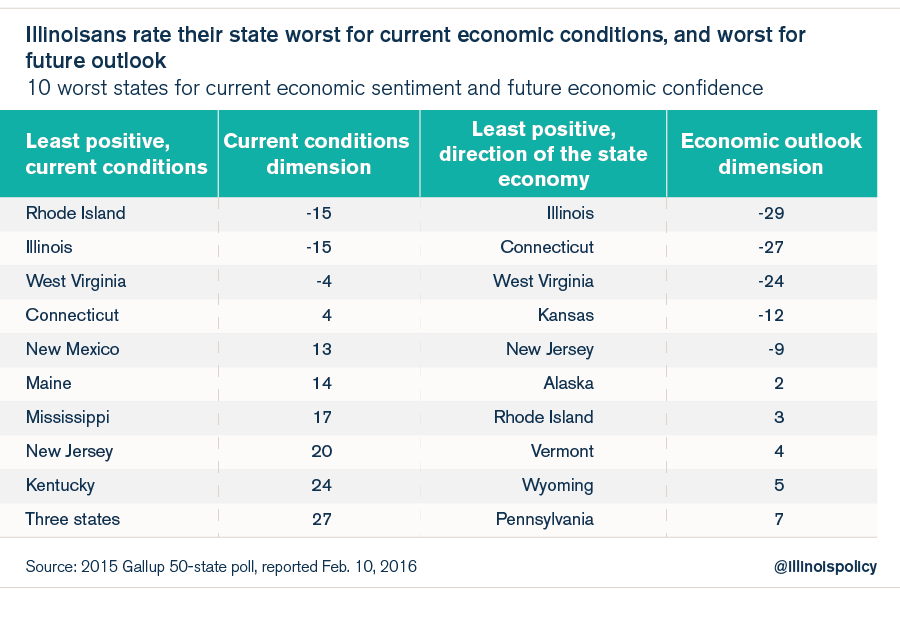Illinois lost 56 manufacturing jobs per workday in 2015
Though neighboring and Great Lakes states added a combined 200 factory jobs per workday on net in 2015, an average of 56 Illinois manufacturing workers, on net, received pink slips each workday during the same time.
A recent Gallup poll showed that Illinoisans are the “least positive” about their state economy compared with residents of every other state. Here’s one reason why: An average of 56 Illinois manufacturing workers received pink slips for every workday in 2015, on net.

Illinoisans are not going to regain their confidence until they stop seeing factories closing and manufacturers heading for the nearest border. Manufacturing is one of a few industries in which workers can find opportunities to rise in the blue-collar middle class. But in Illinois, policymakers put enough roadblocks in place that the industry as a whole struggles to provide the rewarding jobs that Illinoisans deserve.
Policy problems are a big reason why manufacturing workers in Illinois are getting pink slips, while workers in Kentucky, Indiana, Michigan, Ohio and Wisconsin are getting new jobs and promotions.
2015 had 251 workdays. On the average workday, 56 Illinois manufacturing workers received pink slips, on net. That means that for every workday in 2015, 56 middle-class families found out their prospects had grown dimmer, and the possibility of slipping out of the middle class had become much more real. And yet policymakers have done nothing to address these lost futures, or the ongoing blue-collar job losses that continue unabated. Meanwhile, surrounding and Great Lakes states gained a combined 200 new manufacturing opportunities each workday, on net.

Some say Illinois’ manufacturing problems have resulted from global trade knocking out American jobs. There is some truth to that, especially with respect to the job losses that occurred between 2000 and 2010. But now, American manufacturing is competing and growing again, and companies in states around Illinois are adding manufacturing jobs. Illinois, however, has relegated itself to the sidelines by sticking with its uncompetitive tax, regulatory and labor policies.

Illinois manufacturers themselves are ready to up their game, but politicians are not. Any proposals that would help make Illinois manufacturing more competitive, such as workers’ compensation reforms, a property-tax freeze, or Right-to-Work laws, have been dismissed by Democrats in the General Assembly as “an attack on the middle class.”
That’s simply not true. If Illinois embraced these reforms, its blue-collar workers would find manufacturing opportunities once again. These reforms would mean an end to Indiana’s easy poaching of Illinois manufacturers just by laying out the benefits inherent in the Hoosier State’s tax and regulatory environment (coupled with a few tax incentives as sweeteners). It would mean that Illinois’ blue-collar middle class could have a bright future again.
Until the state enacts significant reforms, Illinoisans will answer the same way every time Gallup conducts its polls. No one likes to admit that his state has become uninspiring, short on dynamism, and a black hole for blue-collar opportunities. But nothing will change until Illinois has the policy environment that manufacturers say will bring them back to the Land of Lincoln.
